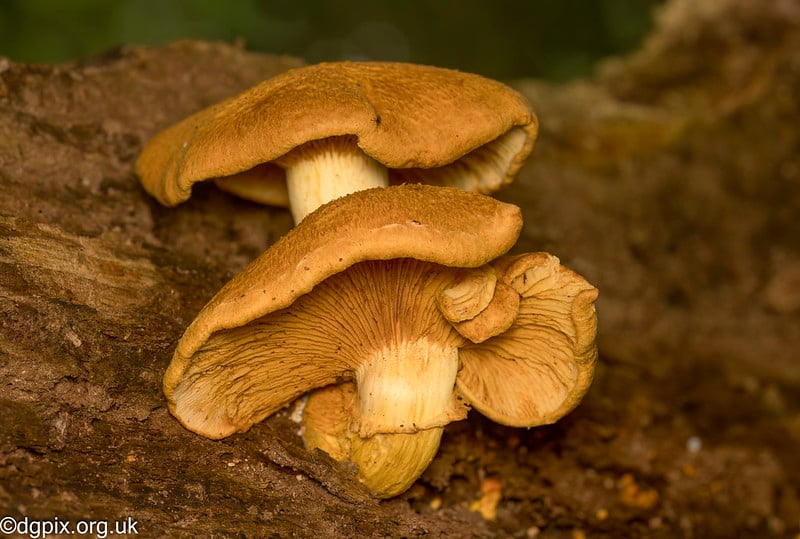
Gymnopilus junonius - Spectacular Rustgill
Among the damp and decaying trunks of Northern Ireland’s woodlands, a golden-orange mushroom sometimes erupts in flamboyant clusters—Gymnopilus junonius, commonly known as the Spectacular Rustgill. With its vivid coloration and imposing size, it’s hard to miss, yet it is often overlooked. This blog post explores its distribution across Northern Ireland and dives into the microscopic world of its spores.
Distribution in Northern Ireland
Gymnopilus junonius is a saprotrophic fungus, meaning it feeds on decaying wood. In Northern Ireland, it’s most frequently encountered in:
- Deciduous woodlands, especially around beech, oak, and birch stumps
- Riparian zones, where fallen trees and high humidity create ideal conditions
- Urban parks and nature reserves, such as Slantry Wood and Oxford Island, where deadwood is left to decay naturally creating a natural habitat for this fungus
It typically fruits from late summer into autumn, with peak sightings in August and September. While not rare, it’s patchily distributed—often appearing in large, dramatic flushes in one area and absent in another nearby. This sporadic presence may be linked to the age and type of wood substrate, as well as microclimatic factors like soil moisture and canopy cover.
There are 12 confirmed sightings out of 41 records on the NBN (National Biodiversity Network) Atlas, showing that this is a first record for Oxford Island:

These specimens were found at Oxford Island in relatively new woodland, on what I believe is a decaying Beech log.
Spore Morphology
Under the microscope, Gymnopilus junonius gill sections reveal a host of rust-coloured spores that are key to its identification:
|
Feature |
Description |
|---|---|
|
Spore print color |
Rusty orange to cinnamon brown |
|
Shape |
Ellipsoid to subellipsoid |
|
Size |
~7–9 × 4–5 µm |
|
Surface |
Finely roughened (verrucose) under high magnification |
|
Reaction |
Spores are dextrinoid (reddish-brown in Melzer’s reagent) |
.jpg?width=1914&height=1300&name=Gymnopilus%20junonius%20(2).jpg)
Spores showing the ornamentation on the surface and sizes
These spores are produced on basidia on the gills that start pale yellow and mature to a deep orange-brown, often with a slightly decurrent attachment. The gills have a protective sheath in juvenile mushrooms that falls away during maturity. The cap itself can reach up to 20 cm across, with a fibrous, scaly surface and a bitter taste—definitely not one for the table!
 Mature pair of fruiting bodies
Mature pair of fruiting bodies
-Edit.jpg?width=5599&height=3737&name=2025-08-16%2022-31-49%20(B%2cR34%2cS7)-Edit.jpg) Gill structure and detail and showing the substrate
Gill structure and detail and showing the substrate
%20-%20Copy.jpg?width=3935&height=2924&name=Gymnopilus%20junonius%20(3)%20-%20Copy.jpg) Juvenile fruiting bodies, with the gill sheath still in place
Juvenile fruiting bodies, with the gill sheath still in place
